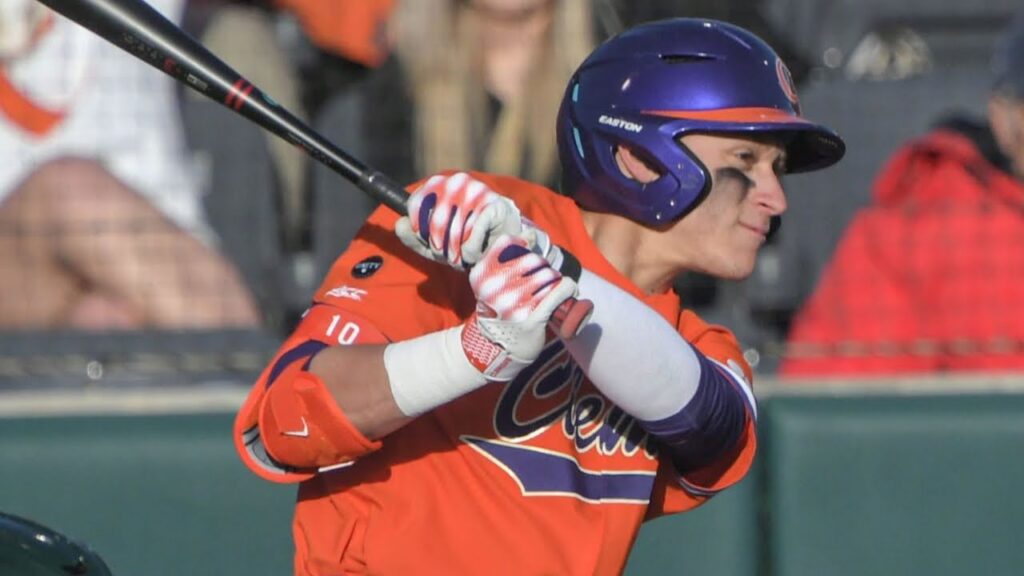EDITOR’S NOTE: The following rankings and evaluations by FSS PLUS are based on subjective analysis and industry sources, and do not influence, are not influenced by, or are affiliated with the opinions and reports of Future Stars Series scouting and development staff.
The 2025 Draft is right around the corner so it’s time for an update to the Future Stars Series PLUS Top 200 college prospects. This board is built on three pillars. Live looks, data evaluation, and intel/conversations provided from within the industry. These players have a ton of time and projection ahead of them, so expect this list to change considerably as we approach the 2025 Draft.
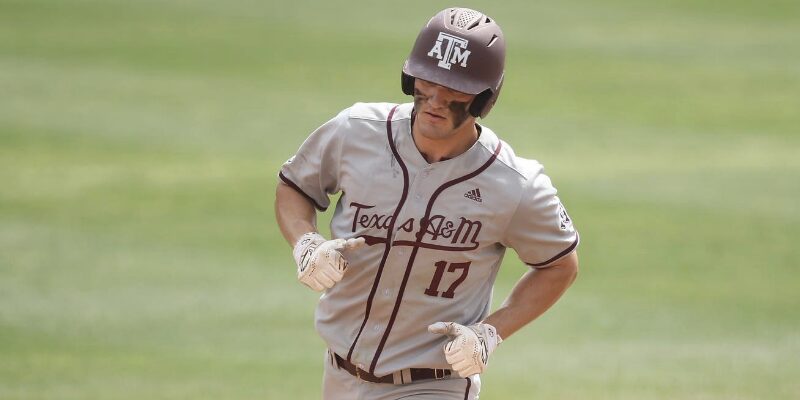
One of the more physical players in this class, Laviolette shows over the fence power to all fields and a powerful left-handed swing. The 6-foot-5-inch Aggie hit 21 homers as a true freshman and stole 18 bases along the way. He parlayed that teenage performance into 29 more homers as a sophomore adding seven stolen bases for good measure.
Laviolette personifies the lefty-loop zone. The bat path is a joy to watch, and conducive to utilizing his double-plus raw power. LaViolette has fluid motions at the plate and violent hips that clear, making way to significant thump. Already very strong, LaViolette figures to be one of the slugging mainstays in the class. In terms of his approach, LaViolette posted well-above average chase rates as a teenager, and although his contact rates leave a bit to be desired, he has a ton of time to polish up those skills. His fly ball rates tend to ensure a hefty slash line regardless of any swing-and-miss he’ll display.
Defensively, he’s destined for a corner where his above average speed projection and above average throwing arm will stick long-term. LaViolette glides in the outfield and has shown tremendous feel for routes and spacial awareness. He can play an average centerfield in a pinch too.
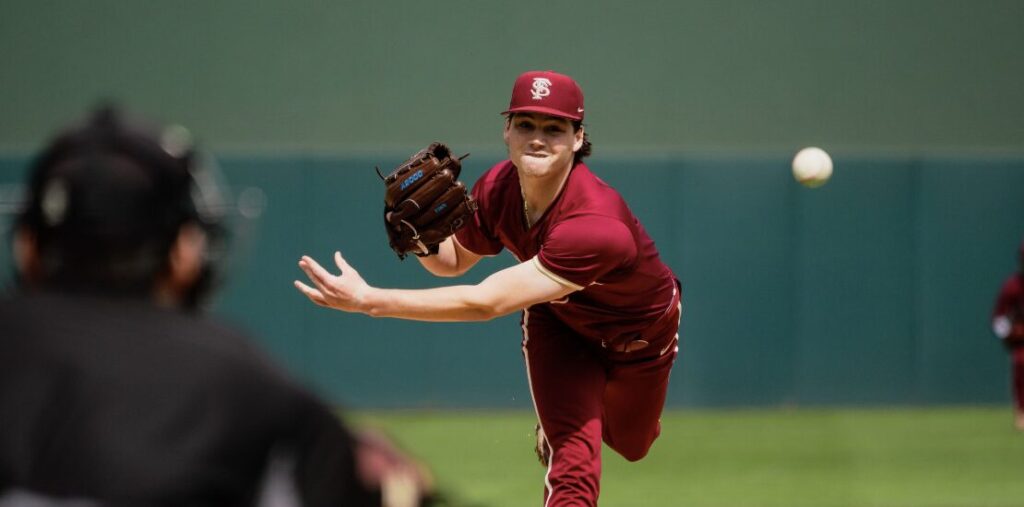
Jamie Arnold is a metric freak. His ability to create velocity and angles from a 54-inch release height is reasonably unprecedented. Arnold has an extremely, outlier-esque flat approach angle with a fastball that absolutely feasts at the top of the zone. He’s been up to 97 but more impressively holds 93-95 into the deepest innings of his starts. It’s very comfortably a ‘plus’ fastball and you might find more scouts that slap a 70 grade on the pitch than you do the latter. Arnold can feast on lower-level opposition with one pitch and that alone is extraordinary.
Arnold’s sweeper is just as impressive featuring considerable depth and big lateral action to get left-handed hitters looking foolish on the regular. He’ll back-foot the breaking ball to right-handed hitters too. He commands the pitch well and his misses are competitive. There’s also a changeup that is more solid average, but considering the nature of his fastball, hitters are forced to respect the top of the zone allowing the cambio to play anywhere in the zone. Arnold made a concerted effort this winter to improve the changeup’s metrics and he’s now turning over some truly devastating pitches to feast on right-handed hitters.
Arnold is a strike-thrower with a simple delivery, a loose arm and athleticism in his operation. He could eventually end up throwing even harder than he is today. He’s precisely what a top-of-the-rotation starter looks like. Scouts are looking for *different* when it comes to pitching prospects. Arnold is very different and will undoubtedly garner Chris Sale comparisons as the Draft approaches.
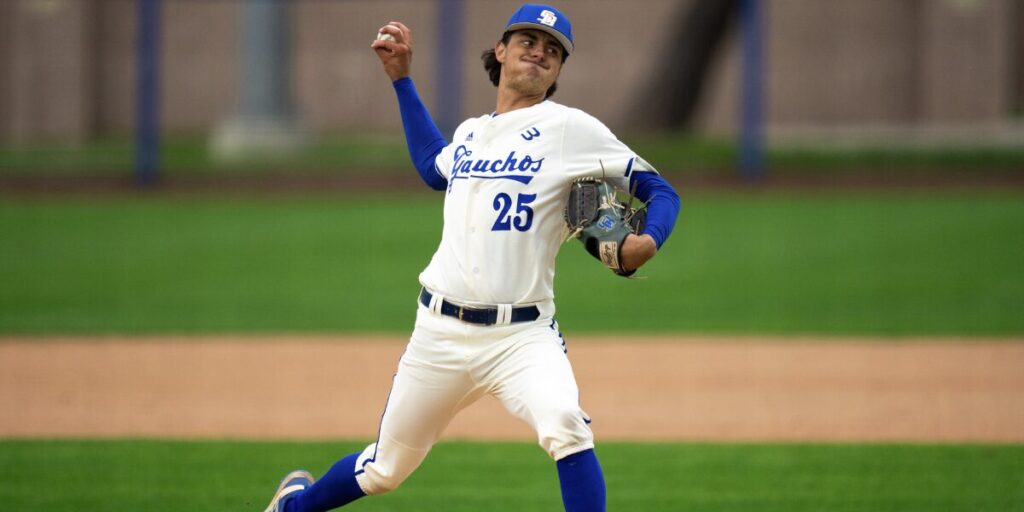
Bremner is a super athletic righty with a fantastic operation on the mound. The fastball has teeth and is already up to 98 with big vertical carry. The changeup is his best secondary with strong fading action and higher spin rates giving it arm-side action. Bremner has shown a willingness to throw the changeup to left-handed hitter and right-handed hitters and has dominated on both fronts. The conviction, arm action and life on the pitch clearly point toward a ‘plus’ offering with a chance of reaching even higher grades.
Bremner’s sweeper has taken strides over the last twelve months and has flashed ‘plus’. At its best Bremner is generating close to twelve inches of sweep on that pitch and will routinely grab 85-86 mph, topping out at 88. He’s still able to generate substantial vertical plane on that pitch too. Landing it where he wants will be important in his developmental upside, but the pure traits, shapes and spin are tantalizing.
The entire arsenal is thrown out of a deceptive slot; tough for the opposition to pick up, let alone square up. It’s all complimented by above average control for the strike zone.
Scouts love what this could become – a mid-90s, explosive arm with starters traits and a metric-darling. He’s got a shot at possessing three above-average to ‘plus’ pitches. Bremner has first round stuff, a top-shelf pitcher’s frame and projection in a lean physique. He checks a whole bunch of boxes.
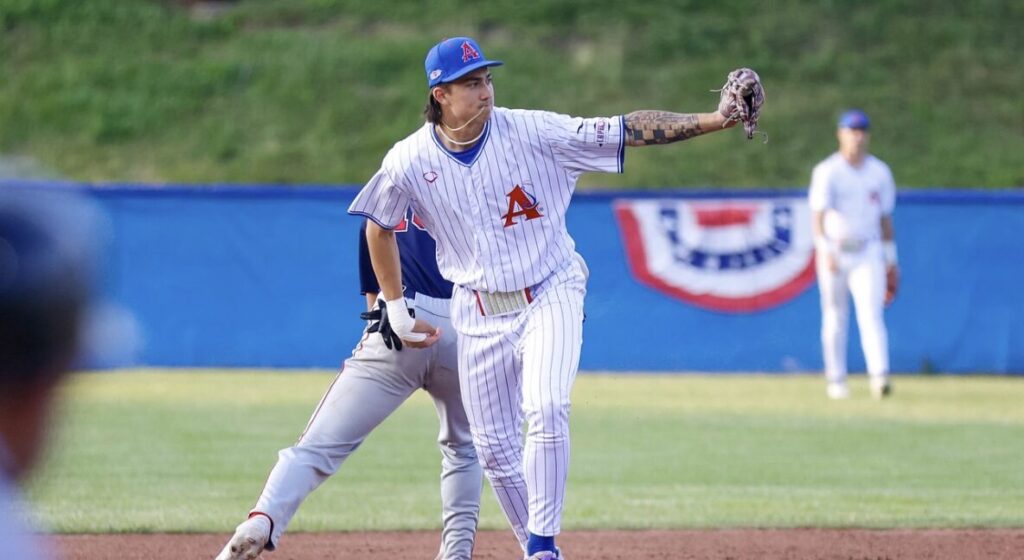
Arquette made his way from the island of Hawaii and became something of a star at the University of Washington. He transferred to Oregon State for his draft-eligible 2025 campaign after UW’s Head Coach Jason Kelly left for Texas A&M following the 2024 season.
Arquette is long and projectable on the dirt and may ultimately shift to third base if he adds more physicality. As things stand he’s a reasonably rangy infielder considering his size and a steady second baseman with a solid arm and nimble actions. He’ll get more of a full-time look at shortstop for Oregon State in 2025. Arquette showcases a strong internal clock with soft hands and balance on the infield. Skeptics have long looked at his size as reason to believe he’s destined for the outfield. He’s continuously proved those doubters wrong.
Arquette’s bat took mammoth strides during his sophomore year and it now represents one of the more complete offensive profiles in the country. There’s bat-to-ball skills and huge exit velocities, both of which were shown off on the Cape too. Arquette has a steady approach and a willingness to use right field, a rare trait for players his size. It’s raw power that plays into right-center field with backspinning batted balls that cut through thick, wet Pacific Northwest air. If there’s one nitpicking trait scouts would like to see Arquette improve as the Draft nears it would be his patience at the plate. More specifically late in counts. He’s in no rush to take walks and can get over-anxious on spin. Still, that’s a rather minor wart on a scouting report covered with above average tools throughout.
Off the field, Arquette is the epitome of an island boy. He lives life at a slow tempo and is easy going. He’ll turn on that competitive fire between the lines, but it’s a slower heartbeat and an evenkeel personality elsewhere. The 95th percentile outcome on a player like Arquette is something of a Troy Tulowitzki. A floor-outcome could be someone like Mike Morse. He’ll need to further prove he’s a shortstop through and through should he hope to land those lofty comparisons when July rolls around.
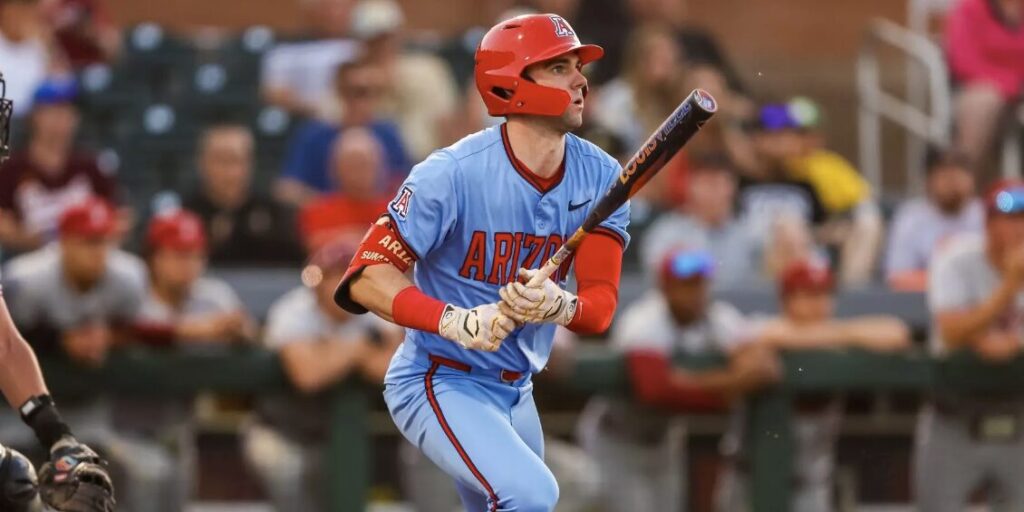
Summerhill is a long-levered, angular outfielder with a sweet, lofty left-handed swing and present game power largely due to his feel for backspinning the baseball. He’s peaked at 110 mph in terms of exit velocities, but proponents of the profile point toward his leaner frame with strength projection on the horizon as reason to believe there’s louder contact in the tank. It’s a quiet swing with pull-side authority with almost zero holes in his stroke. Summerhill posts elite whiff rates and is among the best in the country in terms of in-zone swing-outcome production. There’s a whole lot of polish here and there’s more impact on the way as evidenced by his 6-foot-3-inch athletic frame.
Summerhill has a strong arm best suited for a corner. He’s also presently an above average runner but he occasionally clocks ‘plus’ run times. His frame projects a potential 6-foot-4-inch, 215-pound slugger in due time as he mature into his professional physical form. Summerhill has played centerfield for the Cats and boasts impressive range and reads. He’s got centerfield tools and could stick up the middle of the field if he doesn’t get too physical over his next few formative strength-gain years. All he’s done to this point is hit in Tucson and his profile continues to trend upward. He’s one of the few college bats in this years’ class with middle-of-the-field traits and five tool potential.
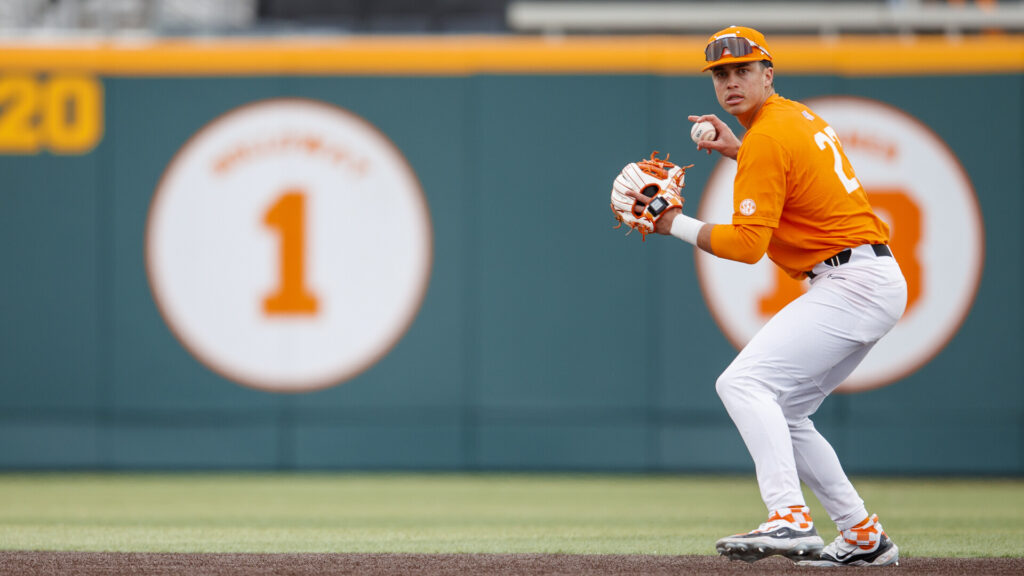
Curley is a physical infielder with big bat speed and a mature approach at the place. He has a workman-type attitude and doesn’t get too high or low on the field. Curley leads by example and not with boisterous actions. He’s the type of player who glues the clubhouse together.
He burst onto the scene as a true freshman showcasing immediate impact in 2024 with plenty of slug and impact for the Volunteers. He does exhibit some swing and miss against more premium stuff, but with time and polish could turn into a power-hitting third baseman with a high on-base percentage. That said, don’t try to sneak velocity by Curley because he absolutely eliminates fastballs at any velocity in the strike zone.
Curley has played a good bit of shortstop in the SEC and while his actions aren’t typical of a prototype ‘6’, he has shown the hands and internal clock to play on the diamond at the next level. Curley has a big, strong arm befitting of a corner infielder. He’s an average runner and is a bit heavy-footed on the infield; a trait that generally pushes players out of the middle of the diamond.
He will be a draft-eligible sophomore in 2025 and represents one of the more impactful bats available in the college ranks reminiscent of his peer Christian Moore from the 2024 Draft.
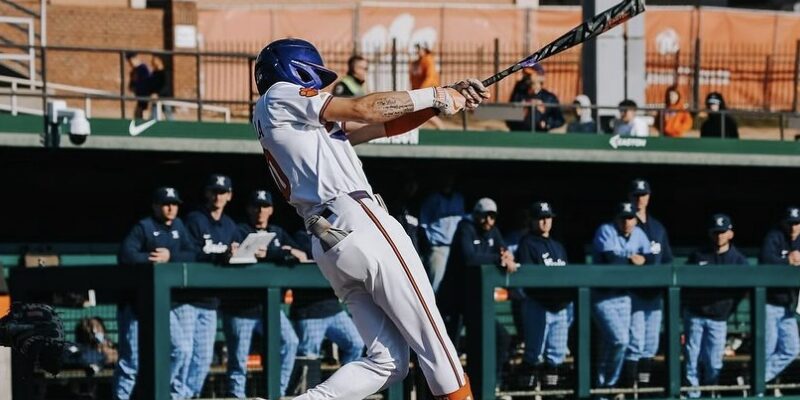
Cannarella instantly became one of Clemson’s best hitters after stepping on campus in the fall of 2022. He possesses borderline elite bat-to-ball skills and a selective, keen eye at the plate. He takes his walks and is a menace on the base paths though he was forced to play more station-to-station in 2024 while dealing with a torn labrum in his shoulder. He had surgery on that shoulder this past summer and is still not fully recovered, but certainly healthy enough to play. He’s not expected to get the full green light on the bases in 2025 either.
While Cannarella doesn’t possess much more than fringe-average raw power, it’s further diluted by his higher-than-preferred ground ball rates. Those will need to improve if he’s to realize his top-ten pick upside. There’s enough raw power to force pitchers to be careful with him and Cannarella has shown innate feel for the fat part of the bat highlighted by an average exit velocity in as a sophomore that approached 91 mph.
One of his greatest tools might be his fiery persona and bulldog mentality in the field. Everyone knows when Cannarella is in the lineup. He’s a vocal and physical leader who demands the respect of his teammates, and more effusively the opposition. He’s a more reserved person off the field, short for words and deferring the spotlight to others.
Cannarella has above-average arm strength and figures to stick in centerfield but could be moved back to shortstop, his original position, in professional baseball. He projects an above-average to plus pure hitter and an above average glove in centerfield if he can clean up the efficiency of his first step on balls hit his way. Cannarella’s biggest hurdle in setting his draft stock in 2025 will be his inability to put his base-stealing talents on full display. That shoulder surgery also begs the question whether his exit velocities will full recover to 2023/2024 norms. Scouts will want to see his bat speed and raw power have come back before investing millions of dollars into the player early in the draft. Cannarella has some components to his profile that are similar to Trea Turner in 2014 and Enrique Bradfield in 2023. Those players were drafted 13th and 17th respectively. Cannarella may fit in that bucket as well.
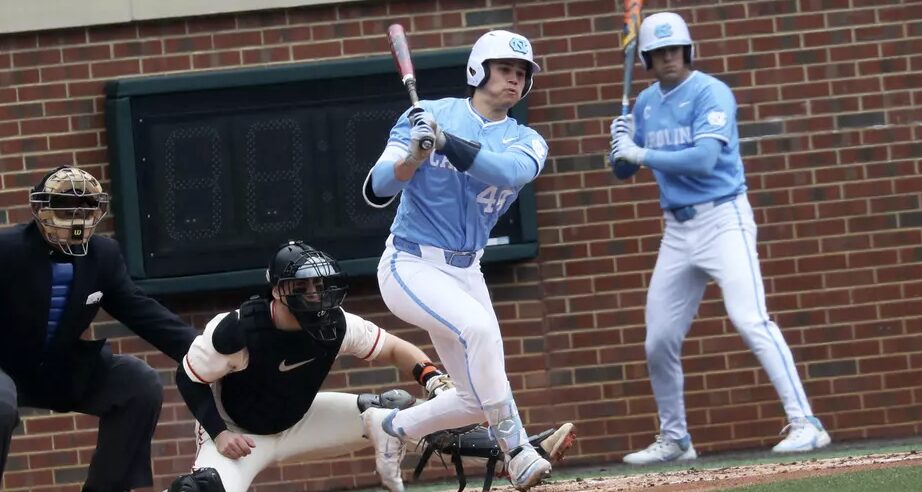
A draft-eligible sophomore, Stevenson walked away from a good paycheck during the 2023 Draft in order to enroll at Chapel Hill. Lauded for his polished hit tool and raw power, Stevenson gets high marks from scouts on his ability to slow down the game at the plate. He takes his walks and puts a jolt into the baseball when mistakes are left over the heart of the plate. He’s proven capable of handling any pitch anywhere in the strike zone, though when he expands the zone he’s had some trouble making contact with the breaking ball. That can sometimes lead to the fear he’ll struggle to hit more advanced spin in professional baseball, though he’s so young at this point and his sample is just one year coming into 2025. Stevenson looked like the total package at times in 2024 as a true freshman with the occasional streaky bouts of getting fooled by the accelerated college game. He has a short, simple, cut-off swing from the left side with a tight, compact turn. He’s got extremely fast hands with considerable raw power that will effortlessly translate to the pro game. There’s some Kyle Schwarber in the operation. Stevenson swings a heavy barrel with loud exit velocities. It’s legitimate impact upside.
Defensively, Stevenson gets green checks for his ability to receive the baseball and has flashed easy ‘plus’ arm strength. He’s still refining the finer details of holding the running game like helping to instruct his pitchers how to be quicker to the plate with runners on. That’ll come. Most scouts trust in the natural arm talent and his ability to throw runners out at the next level despite unspectacular caught-stealing numbers in the ACC. Already a thick profile, Stevenson figures to stay behind the plate so long as he doesn’t outgrow the flexibility required to catch. As presently constructed, scouts believe he’s comfortably the best defensive catcher in the 2025 Draft with a chance to be one of the more complete catching prospects to come out of the college game in the last handful of years. This is what they look like. Tons of strength in the lower-half and core. He’s pro-ready.

There’s an argument to be made that Marek Houston is the most decorated defensive shortstop in the country, surely among those who are draft-eligible this July. He’s got some of the better actions at the position in the college ranks. Houston can make plays coming in on the grass, as well as moving to his left look easy. His solid-to-above average arm strength is capable of making the ocassional highlight reel play moving to his right as well, though he’s not innately gifted in that respect. He projects an above-average to plus defender as a professional.
The athlete and the bat get strong reviews with strong contact and chase rates Houston is a hitter in the box through and through. While the raw power has been 30-grade at best for much of his collegiate career, Houston tacked on 15 pounds of muscle this winter and now looks capable of achieving double-digit homers with a wood bat at the next level. It might not ever be bigger than 40-grade raw power, but it’s coming along. Houston is an above average runner who should provide some value on the bases.
The story for Houston will be just how much impact he can show with the bat as July approaches. If scouts buy the potential for slug going forward, he’s got a chance to hear his name called in the top ten picks. He’s not too dissimilar from a player like Dansby Swanson at this stage, a player who went No. 1 overall in 2015.
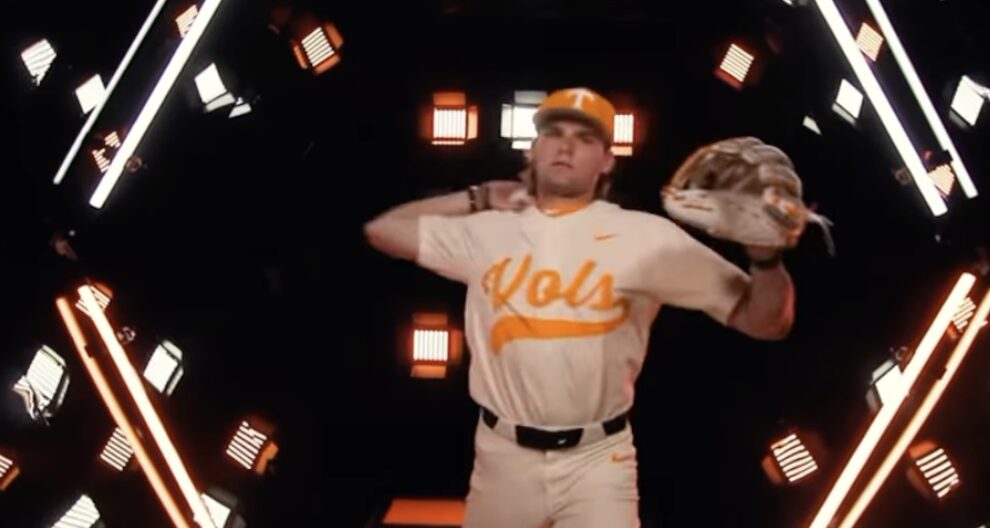
A decorated bluechip hailing from Milton, Wisconsin, Kilen is a talented hitter and defender with considerable ceiling. The midwest has become a hotbed for producing talented baseball prospects the last five years or so and Kilen continues that trend. His brand is that of a sound hitter with impact still coming.
Kilen is extremely aggressive in the box and has a tendency to swing at more pitches than he probably should resulting in well-below average chase rates. Still, he battles, draws long counts, and has largely avoided bloating his strikeout rates. There’s real feel to hit with elite bat-to-ball skills and a willingness to use all-fields.
Kilen saw his exit velocities make huge strides in 2024 highlighted by a peak batted-ball event north of 111 mph. He’s growing into average raw power and could be a threat to hit north of 15 homers in 2025.
He’s a sound glove with above average arm strength and an internal clock. He has the size, speed, hands and lateral range to play shortstop at the next level. A 13th-round pick by the Red Sox in the 2022 Draft, Kilen has done well for himself electing to go to college and bet on his abilities. The whole profile is reasonably polished with more impact on the horizon.
2025 RANKINGS: THE TOP 300
- The Diamondbacks return for Josh Naylor… - July 25, 2025
- Five 2025 draft picks that could win Rookie of the Year in 2026 - July 21, 2025
- 2025 MLB Draft: The predictions you didn’t know you needed - July 16, 2025

